#ArtistsCollaborate
Text


Cirque de Tristesse feat. Old Bill
Artist: Lakisha McQuany
Medium: Acrylic and Oil on Canvas
Dimensions: 12" x 12" approx
Framing: Ready to Hang
Year of Creation: 2024
🎨 Presenting Cirque De Tristesse – a collaboration with the incredible artist Hysterious and McDarkart! 🤡🎪 Dive into the surreal world of a creepy jack-in-the-box clown, brilliantly painted by yours truly on a heart-shaped canvas. Bright colours meet unsettling details in this #TwistedCarnival creation. 🔮🖤 Swipe to witness the fusion of two dark art souls! #ArtCollaboration #DarkArt #TwistedSpectacle
#circus#carinval#clown#jester#cirque#cirdedufreak#sideshow#TwistedSpectacle#TwistedCarnival#ArtCollaboration#DarkArt#CreepyClown#SurrealArt#OutlyreArt#MichaelHussarInspired#ArtistsCollaborate#HorrorArt#AlternativeArt#ArtWorld#ArtistCommunity#CreepyCreation#ArtisticSynergy#HeartShapedCanvas
3 notes
·
View notes
Text
Stormsshirts.com is a print on demand clothing store that offers a variety of unique and stylish printed clothing. From t-shirts to hoodies, our collection features exclusive designs created by talented artists from around the world. Shop with us today for high-quality products and exceptional customer service.
#Stormsshirts#PrintedClothing#UniqueDesigns#WearYourStyle#TrendyFashion#WardrobeEssentials#ArtistsCollaboration
1 note
·
View note
Photo
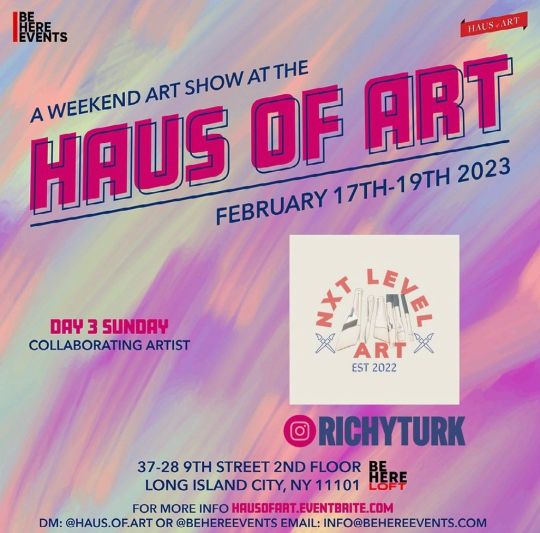
Don’t miss this event NXT LEVEL ART will be showcasing at this event in LIC, Queens on February 19th. All artist will be collaborating here. ✊🫡💪👌✌️ get you tickets at www.Eventbrite.com link will be in my BIO shortly. Come show 💙🐦🪶💨💵💥🔥. #nxtlevelartpost #nxtlevelartshow #showlove #spreadlove #queens #nyc #longislandcity #statenisland #brooklyn #bronx #consistencyiskey🔑 #nevergiveup💪 #nycartshow #artshowsnyc #artshow #artistoncanvas #artistscollaboration #artforsale #instagramartist #soberlife #acrylicpaintingoncanvas #acrylicpainting #718 #718artists #nycartist #streetartist #cleanandserene #makeithappen #supportlocalartists #smallwins (at Long Island City, Queens) https://www.instagram.com/p/CobMep7O50A/?igshid=NGJjMDIxMWI=
#nxtlevelartpost#nxtlevelartshow#showlove#spreadlove#queens#nyc#longislandcity#statenisland#brooklyn#bronx#consistencyiskey🔑#nevergiveup💪#nycartshow#artshowsnyc#artshow#artistoncanvas#artistscollaboration#artforsale#instagramartist#soberlife#acrylicpaintingoncanvas#acrylicpainting#718#718artists#nycartist#streetartist#cleanandserene#makeithappen#supportlocalartists#smallwins
0 notes
Text
How Independent Artists Can Succeed Without a Label Deal?
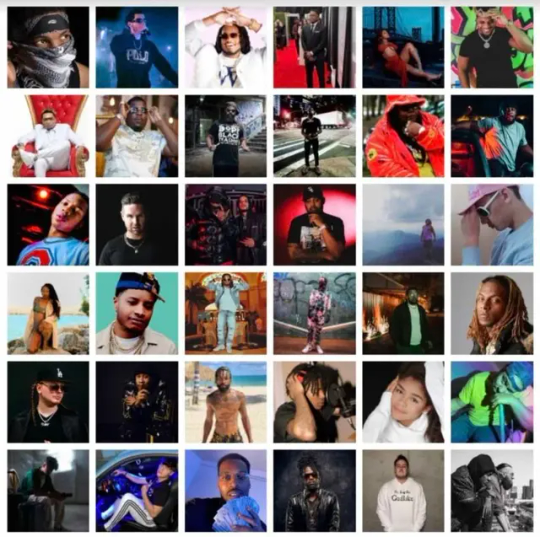
In the music industry, the traditional path to success often involved securing a record deal with a major label. However, the landscape has significantly changed, and today, independent artists have more opportunities than ever to succeed without the backing of a record label. Here are several strategies that independent artists can utilize to build their careers and achieve success on their own terms.
Leverage Digital PlatformsStreaming ServicesPlatforms like Spotify, Apple Music, and Amazon Music have revolutionized the way music is consumed. Independent artists can distribute their music directly to these services through distributors like TuneCore, DistroKid, and CD Baby. By getting their music onto these platforms, artists can reach a global audience and generate revenue from streams.
Social MediaSocial media platforms such as Instagram, TikTok, Twitter, and Facebook allow artists to connect with fans directly. By regularly posting content, engaging with followers, and using targeted ads, artists can build a loyal fanbase. Viral challenges and trends, especially on
TikTok, can propel a song to widespread recognition overnight.
YouTubeYouTube remains a powerful tool for musicians. By creating music videos, lyric videos, and
behind-the-scenes content, artists can attract and retain fans. Monetizing videos through ads
and partnering with other creators can also provide additional income streams.
Build a Strong BrandUnique IdentityDeveloping a unique identity and brand is crucial. This includes everything from the artist & visual aesthetic and logo to their personal story and message. A strong brand helps artists stand out in a crowded market and makes them more memorable to listeners.
Consistent ContentConsistency in content creation and release schedules helps maintain audience interest. Regularly releasing new music, videos, and engaging content keeps fans excited and invested in the artist’s journey.
Utilize Crowdfunding and Fan SupportCrowdfunding PlatformsPlatforms like Kickstarter, Patreon, and GoFundMe allow artists to raise funds directly from their fans. Crowdfunding can be used to finance albums, tours, music videos, and other projects. In return, artists can offer exclusive content, merchandise, or experiences.
Fan EngagementBuilding a strong connection with fans is key. Engaging with fans through social media, live streams, and meet-and-greets helps create a loyal community. Fans who feel personally connected to an artist are more likely to support them financially and spread the word about their music.
Live Performances and TouringLocal GigsStarting with local gigs and gradually expanding to larger venues helps artists build a live performance reputation. Performing live not only generates income but also strengthens the bond with fans.
Virtual ConcertsVirtual concerts and live-streamed performances have become increasingly popular. Platforms like Twitch and YouTube Live enable artists to perform for a global audience from the comfort of their home. Virtual concerts can be monetized through ticket sales, donations, and sponsorships.
Collaboration and NetworkingCollaborate with Other ArtistsCollaborating with other independent artists or influencers can help expand an artist’s reach. Collaborations introduce artists to new audiences and can result in creative synergies that enhance the music.
Industry NetworkingBuilding relationships within the industry is important. Attending music conferences, workshops, and networking events can open doors to new opportunities, including collaborations, performances, and media coverage.
Smart Business ManagementFinancial PlanningIndependent artists need to manage their finances wisely. This includes budgeting for production costs, marketing, touring, and other expenses. Using financial tools and software can help keep track of income and expenses.
Rights ManagementUnderstanding and managing music rights is crucial. This includes registering music with performance rights organizations (PROs) like ASCAP, BMI, or SESAC to ensure that royalties are collected whenever their music is played publicly.
Conclusion
Succeeding as an independent artist requires a combination of creativity, business acumen, and strategic planning. By leveraging digital platforms, building a strong brand, engaging with fans, performing live, collaborating with others, and managing finances effectively, independent artists can carve out a successful career on their own terms. The music industry is evolving, and with the right approach, independent artists have the power to thrive without the need for a traditional record label deal.
Article Source: https://digzmediagroup.com/
#independentartist#musicindustry#makingmusic#musicbusiness#musicmarketing#musicpromotion#artistbranding#musicstreaming
0 notes
Text
Collaborating with a dear friend on a project for Yule! We're turning 6 Christmas Creatures and Yuletide Spirits into 3D printed lanterns for the dark tide of the year. All 18 panels, 3 per lantern, are designed and printed, and we're ready to begin assembling! I'll post them as they come together. Thanks, Drew, for making these possible!
#3dprinting #Christmas #yule #cailleach #winter #collab #artistscollaboration #spirits #queenofwinter #lanterns #creepychristmas #pagan #paganart #paganartist #witchesofinstagram #pagansofinstagram #workinprogress
instagram
0 notes
Text
HOME BOOKS INTERVIEWS
HOPE COLLINSON in conversation with the four artists who made artists books during lockdown and showed them in the HOME BOOKS exhibition in May 2021. The four artists were brought together during the third Covid-19 lockdown, 2021, as participants of the online course ‘Root-Home’, a CREiA::: Creative Attentive Studio for mindful art practice. msdm.org.uk/creia
These CREiA workshops were piloted during the first lockdown in 2020, with a focus on combining deep listening and creative exercises inspired by mindful art practice and relational domestic crafts. Through shared engagement together and combining the domestic space of confinement with the practice of book-making, the artists developed their practices and created books based on the theme of home. Some of these were shown in the exhibition HomeBooks.
In these interviews, Hope asks the artists about how they have translated their practice into books...

Rhiannon Evans Loose Leaves 2021
RHIANNON EVANS
Rhiannon Evans is an artist based in North Oxfordshire with a dynamic practice based on interventions and performance and rooted in community engagement. She is interested in how personal and collective experiences are recorded and transmitted. Her most recent work explores extended associations with the structures and systems of archival narrative.
How does the value of your personal archive inspire your books?
It isn’t so much the value of the personal archive but the nature of it. The way it moves unconsciously in and out, through present thinking and making and jumps onto, into and around other topics in a seemingly random yet connected way
"the books are more like a conversational story-telling"
In what ways does the idea of translating experiences through books and stories influence the books ?
The books I think are more like a conversational story-telling rather than something scripted. And unlike one book with sequential pages and a single narrative, there is more of a sense of a room with stacks of books, ordered according to the theme of the story at the time. Very non-linear unlike an ordered library. A sort of hypertext system to dip into with a variety of outcomes contingent on what is ‘leading' at the time.The ‘pages' are reformed, reordered and linked differently with every ‘re-telling or re-reading depending on the external and internal context of the ‘conversations’/ relationships. A sort of visual intertextuality....?
How did you link the idea of nature to books through folios?
I had been looking at bookmaking, folding, pamphlets etc and also thinking about printing and paper size etc especially during discussions during catalogue making.I noticed the language - like leaves for pages, folios for books or pamphlets made of paper etc and thought of how these are related to the natural forms of the leaf. Plus the relationship of archives and folios and the content of the work I had made/ was making.I have a botany professional practice background and many of the ‘pages’ of the work used altered botanical images which I made during the ‘Dwell Residency’!When working with CREiA I began to see a way of presenting works as a series of Folios rather than a set of images and duplicated editions.Whilst installing and sitting in the space with the work, the ‘leaves' occasionally fell ... Real leaves fall, decompose, and are then reabsorbed by the tree and other plants nearby incorporated and form new branches and leaves.
"the dead archive resurrected"
So inadvertently unconsciously it has a further fit - to a form of continuity and 'animated preservation’ - the ‘ dead archive’ resurrected .... Gosh this all sound rather pious and I don’t mean it like that at all. Like the printed images themselves, I hope there is a feeling of ‘inorganic’ systems and technology and ‘organic ‘ living structures being intertwined - biotechnology which has always existed...

Annie Rapstoff Furniture Undertones 2021
ANNIE RAPSTOFF
Annie Rapstoff is a cross-disciplinary artist, interested in the interrelationship with ideas concerning place, the land and the human experience. Work may take the form of instructions, events, performance for the camera and in situ, gestures, interventions, video and writing/language. She tries to pay attention to what she hears, what she feels and what she experiences in space, through objects and across time.
Annie, how did you translate performance to books?
Performance work is transient and books offer material evidence, documentation and research possibilities. Book works have allowed me to excavate my archive of work and rework pieces and see them in a different light during the pandemic.
Covid 19 has left performance work bereft of venues and indoor spaces from which to experiment and show work. So apart from working outside which has been something I have done for many years and continued at times through lockdown; book art has offered a way to develop work and showcase it. It has offered a means of developing a narrative through text alongside images.
I translated performance work to a book form by extending the parameters of the work to include text and stretch the thinking further. Performance practice became something I could add to and embellish such as the fabric used on a chair whilst jumping on it. The book form allowed me to have a more intimate relationship to my performance work and it offered a way of standing back and really listening and seeing the work without being in it in the present moment the addition of book art extends the form of the work I am offering.
"The book form allowed me to have a more intimate relationship to my performance work"
So did the lockdown period encourage artistic productivity for you?
Yes, the lock down has had a very positive impact on my practice. Perhaps I respond well to confinement, or the taking away of responsibilities and commitments which take my time and focus away from my practice. Most of these demands were taken off me and I think I was ready for a new project.
Before the lockdown, I had experienced some health concerns and I had for some time lost my focus and energy. Then during the lock down a colleague began making a film on a first experience we had during the lockdown, my first was making masks and during this time I was reading a book by Daniel Defoe on the plague. The book mentioned the clothing and experience of the so-called plague doctor. A beak-shaped mask was used as protection. It was packed with herbs that were said to offer protection from the stench and disease of the plague. This greatly influenced the ongoing project I have conceived concerning birds and mask-wearing. I enjoyed the opportunity to make books during Creia workshops. Which offered the space for my work to be shown and given space rather than remaining in my head or sketch book undeveloped.
I have never seen myself as a maker, at art school I tended to focus on performance, text socially engaged work, film and photography. Making was something others did with their hands and I had an idea in my head that this just wasn’t part of my area of practice. However, since the lockdown, I have re-evaluated my work and seen that I have been making it even before this time. I was involved in working with found pigment on fabric and more recently I have been books putting images together in digital collage or overlaying images, areas I now see as important and that I should value more.
Do you feel that putting your practice into a different area something that you feel will be a lasting change to your art?
I think book arts will be an area of my practice that I keep developing, the reason being that it provides a container for ideas but more than that it extends ideas. I don’t think I will ever give up making performance-based work and it will always be essential to my practice, however book art has added a mutually compatible skill and enhances my work.
"book arts.... provides a container for ideas"
By making books I am empowering my practice through the authorship of binding and making, the act of making to me is as performative as many other actions I carry out and the viewer is complicit in the embodied action of entering the book and turning the pages. As an artist I have never seen myself as very skilled in any one medium and neither do I want to be dictated by one medium, but the knowledge of making an object has since the pandemic been fulfilling and rewarding and a means of communicating in an object form.
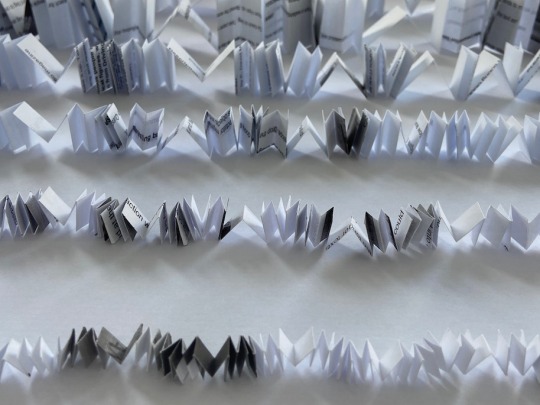
Peta Lloyd The Weeks rush by as the Hours linger 2021
PETA LLOYD
In 2020, during Lockdown, Peta completed her PhD, Text+Object+Action =Textact, which investigated if and how written text can work as the main focus of performative art practice. Having spent a long period designing and performing works with a clearly defined starting point, Peta is keen to use her DWELL time to explore different ways of working, both through performance and other media."The current inability to mix and work in the public realm has focussed my attention onto the making of short and simple works performed to the camera and resurrected her interest in printing, paper making and book-works."
Peta, did you feel limited through the constraints of performance to camera?
I felt performing live and performing to the camera were two very different activities. I enjoyed performing to the camera as:
I could shoot the film deciding what the audience saw and did not see within the work. I enjoyed filming parts of the body and not having the whole body on view.
Providing the materials allowed, I could shoot work multiple times until I was satisfied with the piece.
It was easy to focus the camera on a small activity which would have had little impact if carried out live.
Did creating without a specific purpose in mind change your approach to your practice?
My work has always seemed to be process led rather than following a particular theme of interest. However, freedom to work with any materials and on any passing idea was liberating. I was able to try out new techniques and visit old skills used in previous works.
"using fine motor skills to fold and cut"
With regards to trying out new techniques - was beginning to work smaller a big change to your practice?
I found working small quite freeing as making, moving and manipulating is not as physically difficult. With the A4 sheet books, I was interested in how small and how many pages I could get into a book. It was interesting using fine motor skills to fold and cut eventually minute pieces of paper. Although repetitive and time-consuming it was a relaxing and enjoyable task.
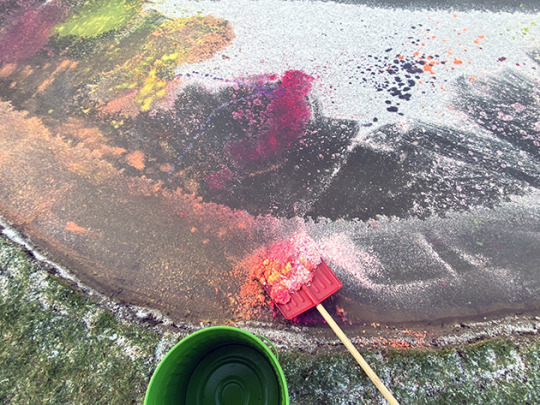
Clare Carswell Still from ARENA 2021 performance to camera
Clare Carswell works with performance, drawing and installation to make works for the gallery or the public space.
In works such as SMILE KEEP SMILING, DESSERT & SUGAR SUGAR, that exist somewhere between public health warnings and faux burlesque, Clare examines the trials , and the comedy, of maintaining an ageing body. She reveals some of the adaptations that need to be made in order to inhabit it well and the necessity of celebrating its power and beauty by transforming physical or emotional sites of pain into moments of joy.
Recent works find Clare making artists' books such as LAUNCH and WINGZING during the Covid-19 lockdown as she worked at home making private performances to camera in nature and the domestic space. These works come from a more reflective and meditative practice that leads to felt sense images that are vibrant, energetic and spontaneous. They celebrate the creative impulse as life force and identification with a chosen place as home.
Clare, you say that your books act as a portal to the performance works, how does this happen?
The books shown in the Home Books exhibition are proposed as portals to solitary performance works made to camera during lockdown. The inclusion in them of photographs of the live works or of a QR code linking to online videos of the work offers an experience of the work, but one that falls into the category of documentation.
The ephemeral nature of performance art is what draws me to it as an artist. Being present has previously been essential to experience my performance work, and as I don’t repeat my works there has only ever been one opportunity to do so. Documentation has been critical in order to disseminate my work beyond the attention span of the audience.
The works I made during lockdown have stemmed from an emerging embodied practice and been physically immersed in nature. Where an audience could not be present, then it felt more pressing to enable a corporeal experience of the work rather than just the digital. The performance works are embodied within handmade books that a viewer can handle and connect directly to my experience of making the work. They propose an active participation and another being present.
LAUNCH 2021, a flower fold photo book, takes on an additional aspect of prop as it uses two of the painted paper water lilies that were floated on a pond in the performance. I decided to use them to form the cover for the book, offering physical engagement with actual objects used in the work. This decision determined the ultimate format of the book as a lotus flower fold.
WINGZI 2020, is made as a folded book form, a seven section dos-à-dos, that I wore for the staged performance to camera and so the book embodies the performance and the performance the book.
The handmade book is offering me new possibilities for creating extensions to performance works that are more than documentation, but take their place as vital adjunct or completion of the work. I am now taking this further by designing performance works within which I act as living lectern, sharing the books with an audience. I am integrating my body visually within the books by the use of applied drawing and the making of props that become the books.
It is possible to challenge the meaning of being present and to connect with an audience via online platforms such as Zoom which I am now using when sharing the books.
"the book is offering me new possibilities for creating extensions to performance works"
How did you adjust to the differences that come with performing to a camera rather than to an audience?
Performing to camera is something I have done many times and when done alone it does mean that there is less distraction, an increased absorption in the work as well as control of it. VOTEM, made in a hotel room and FUEL, in my studio, both made in 2010 allowed heightened emotional experiences to be played out and documented.
The conflation of performance and photography is a strategy that I have also employed when making performance work with an audience. The introduction of a camera in the work makes explicit the temporal nature of the work, our varying positions within it and the futility of attempting to capture it. I will use the camera to photograph the audience and so take charge during the performance of the documentation of the work as in YOURS 2007. It is a means of drawing audience into the work as willing participant and I will often break off in the performance to hold a conversation with audience in which I explain what I am doing with the camera. The camera makes me behave differently and the audience too, who have I invited to exchange pictures of ourselves TAGS 2007, GIFTEN 2006, or to share a picture of us both as a selfie PURE JOY and KEEPER both in 2017.
The imposed solitude of lockdown meant another new behaviour as the camera became both a tool and sole witness to the works. The works were fleeting and disappearing before my eyes as wind blew or ice melted and so one hand was holding a camera even as I was activating objects with the other.
I am welcoming a shift into a phase of work that welcomes stillness, deeper listening and intuitive response to the environment and the natural world. They are solitary works for now and if the audience is to be invited again to witness them then I expect distance will need to be built into the works. Making the work and broadcasting it live online may achieve this.
I foresee the presence of witnesses as only one point of contact with my work and the camera as a vital partner so that the photographic, or filmed, as well as the drawn and constructed traces of it are equally relevant experiences of my work.
How did you incorporate this intuitive response to the natural world within your work?
The restrictions of the first lockdown meant that I could not make the journey by car to my studio to work there. I set up a temporary studio at home home on the dining table. This was workable as long as I restricted what I made to works no bigger than an A2 drawing board that could be removed in order for meals to be eaten. The weather that spring was warm and sunny which helped cope with the confinement and meant that increasingly life was spent in the garden and I began to perceive it as a site for performance work. I allowed the site to inform the content, the making processes that I brought to it and the form of the work.
The life we have been forced to live during the pandemic was alien then but feels more routine now. In those early days of Covid-19 I wanted to make work that referenced the frightening and overwhelming collective experience, to try to understand it by proposing it as subject for art making. I adopted the language of the pandemic by measuring out two metre strips on the lawn with painted rope within which to make socially distanced drawings and actions. At first this meant placing drawings or objects with nature acting simply as a backdrop. Daily walks in nearby woods led to work where I changed nature by hand-painting cow parsley and used my breath to blow bubbles above it in a series of playful and optimistic actions in a solitary performance to camera.
"I adopted the language of the pandemic"
As well as drawing and moving within the nature around me, I collected dead flowers and made works seemingly attempting to revive them with water or light, or tucked them into bed as though they were patients.
I began to observe closely the changes made to the domestic space by sunlight penetrating the house, especially late in the afternoon when low sunlight passing through the prism of glass objects on sills refracted the light into colour bands. I started to make still life works to include the refracted light and timed the tableaux to be photographed within the few moments that the sun passed through the glass. This led to drawings and table top performance works timed for photography in the same way.
Preoccupations with the natural world as site for performance were challenged by a house move made during the summer of 2020 and the arrival in a new home with an unfamiliar garden. The site was empty for me of histories and I began to work in a state of arrival, of alertness, in a more embodied way. Deep Listening practice led to the emergence of energised and spontaneous images placed in nature and harnessing the elements, wind, ice, water as active in the work. Works made in the cold months of the past winter lockdown, LAUNCH 2021 and ARENA 2021 are examples, scraping frozen paint off a pond so that it was left clean.
The ethos of nothing remains is critical and the works are removed or wash into the land or water naturally. In so doing a collaboration between the sentient and non sentient is honoured.
All writing is copyright the artists and Hope Collinson and cannot be reproduced without their permission.
#art writing#artistsoninstagram#womenartists#contemporaryart#performanceart#artistscollaborate#thisisliveart#feminism#artoftheday#drawing#books#artist books
0 notes
Photo
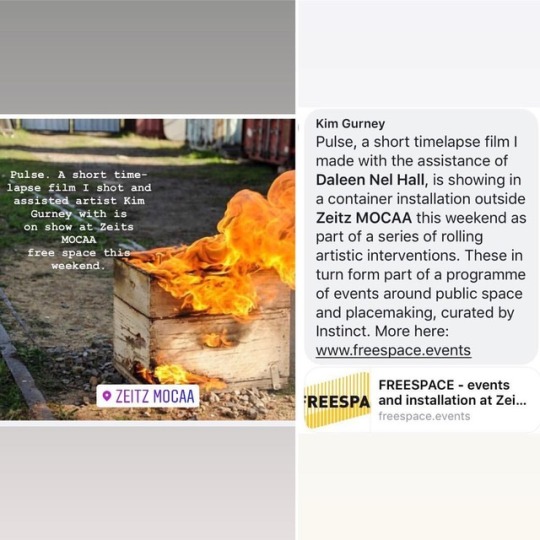
Super excited to have been a part of this! It was an honour to have worked with, and assisted artist Kim Gurney in the production of "PULSE" -this short time lapse film is on show this coming weekend in the Zeitz MOCAA Free Space in Cape Town. ---------------------------- • • #zeitzmocaa #digitalphotography #nikon #iamnikon #iamnikonsa #fineartphotography #timelapseart #stopmotion #artistscollaborate #capetownschoolofphotography #CTSP #daleennelhall #lovechasingdragonflies (at Zeitz MOCAA) https://www.instagram.com/p/BtnLiWPhCVf/?utm_source=ig_tumblr_share&igshid=rdc43gra0h3j
#zeitzmocaa#digitalphotography#nikon#iamnikon#iamnikonsa#fineartphotography#timelapseart#stopmotion#artistscollaborate#capetownschoolofphotography#ctsp#daleennelhall#lovechasingdragonflies
0 notes
Text

Photo by Matt Hetro
Envision This
By Brittny Lee DawningCreations
#photography#naturephotography#art#nature#blogging#naturemagic#poetry#hiking#exploring on the weekends#artistscollaborating#inspiration#winter icicles#winter#original quotes
3 notes
·
View notes
Photo
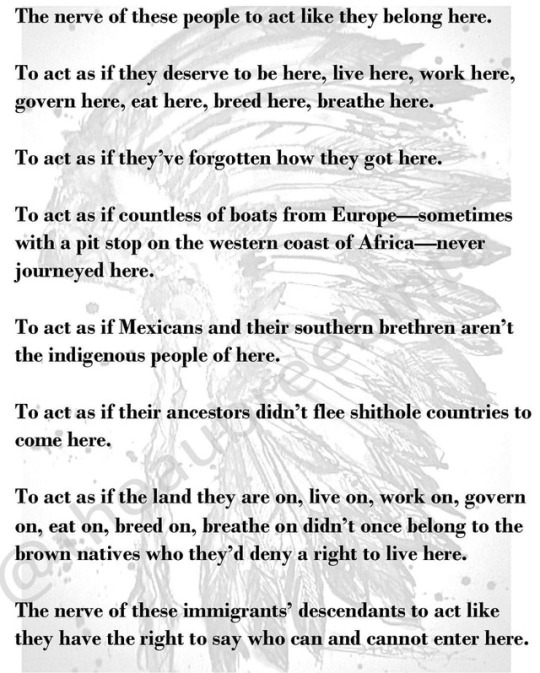
#shortpoems#poetry#art#dopeart#artistscollaboration#artislife#poetryislife#poetryisart#wordsareart#streamofconsciouspoetry#streamofconscious#writeractivist#writer#poet#daca#immigration#immigrantsmakeamericagreat#respect#xenophobia#blackandbrownunity#mexican#fuckyourwall#nationalemergency#resist#resistance#poetsofinstagram
1 note
·
View note
Photo

New posters in the making! Collab with artist @103art This one is a bit robotic which I love.
#wildplakken#streetart#nijmegen#pasteup#wheatpaste#posterart#artposter#art#artistscollaboration#103art#donderkop#painting#abstractart#abstractfigurative#figurativeart#illustration#portraitpainting#portrait#woman#face#orange#freehand
0 notes
Photo
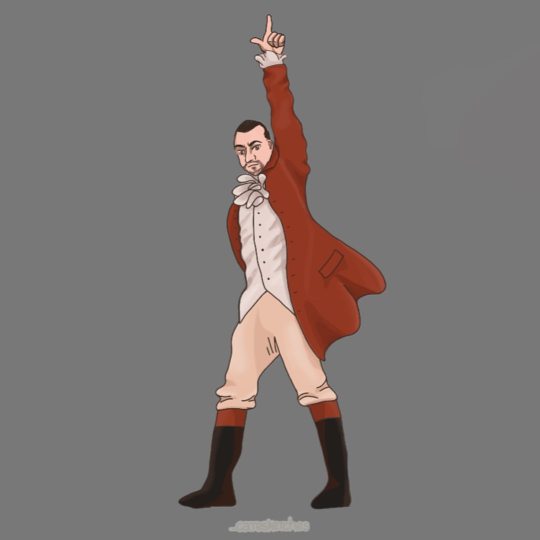
{Alexander Hamilton} • • • • • • • • • • • Hashtags #hamiltoncollab #hamiltoncollaborative #hamilton #musical #artistcollaboration #artistsoninstagram #artistscollaboration #drawingstyle #digitalillustration #digitaldrawing #musicaltheatre https://www.instagram.com/p/CDpK3VLBzUW/?igshid=t54j9e8imeid
#hamiltoncollab#hamiltoncollaborative#hamilton#musical#artistcollaboration#artistsoninstagram#artistscollaboration#drawingstyle#digitalillustration#digitaldrawing#musicaltheatre
0 notes
Text
🎨 Presenting Cirque De Tristesse – a collaboration with the incredible artist Hysterious and McDarkart! 🤡🎪 Dive into the surreal world of a creepy jack-in-the-box clown, brilliantly painted by yours truly on a heart-shaped canvas. Bright colors meet unsettling details in this #TwistedCarnival creation. 🔮🖤 Swipe to witness the fusion of two dark art souls! #ArtCollaboration #DarkArt #TwistedSpectacle
#circus#carinval#clown#jester#cirque#cirdedufreak#sideshow#TwistedSpectacle#TwistedCarnival#ArtCollaboration#DarkArt#CreepyClown#SurrealArt#OutlyreArt#MichaelHussarInspired#ArtistsCollaborate#HorrorArt#AlternativeArt#ArtWorld#ArtistCommunity#CreepyCreation#ArtisticSynergy#HeartShapedCanvas
0 notes
Text
Back in August, a little idea was born by Cheryl (@cherylg_lucifanart in IG ) and Wendy (@wendydeckerstar on IG) – since both had drawn different frames from the same clip… what if more artists were brought in and did more frames? From this idea, an open invitation was sent out via Twitter and many artists responded.
There is so much talent in the Lucifer fandom, it blows my mind. It’s been an honor to get to know these artists, work with them, laugh with them, watch them create magic in their own style and see it all woven together and edited masterfully into this dream video.
I look forward to future collaborations with this group and with other artists. It’s truly been incredible.
The artists:
IG handles: @mai_lundbyholm @vayeka_ @orab_170_art @linesbylou @sofiafgrape_art @lustforart__ @gladys19fanart @juli_art56 @jocebliss @thepoisonofgod @laurengermxn_ @wendydeckerstar @abrikard @claricep15 @paulaart69 @seasofrhye @c.risx @missirizzi @thedothatgirl @neuralcluster @cherylg_lucifanart @calia_lynn
⛔Please do not repost⛔
#traditionalart #digitalart #lucifans #Lucifer #LuciferNerflix #Luciferseason4 #fanart #instaart #luciferfanart #tomellis #lucifermorningstar #mixedmedia #mixedmediaart #mixmedia #pencils #pastels #oilpastels #colorpencils #markerart #digital #acrylic #blackandwhite #colors #matingseasonbyaaronkaplanandjamisonhollister #luciferseason4teaser #teasertrailer #artistscollab #artistscollaboration
#lucifer#lucifer fanart#lucifer netflix#tom ellis#lucifer fan art#mixed medium#Collaboration#Art collaboration
56 notes
·
View notes
Photo
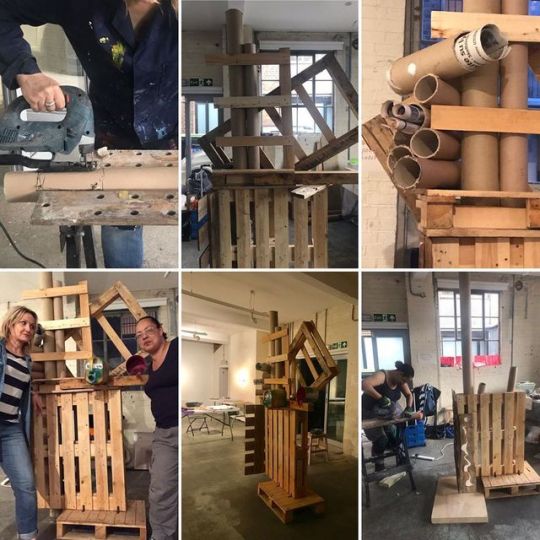
A week of making |responding to the canal & its hidden spaces between the old, the new and the nouveau riche #ArtistsCollaboration #AltMFA #GuestProjects #Hackney @Guestprojects https://www.instagram.com/p/ByIYkf2HKsI/?igshid=13u9edxd9mjtq
0 notes
Photo
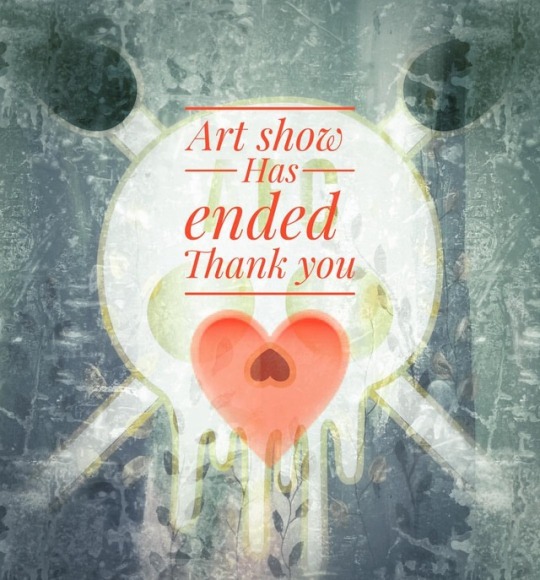
Thanks everyone for your love and support, it is always so appreciated. We are son busy this time of the year that not all our members could participate. However our next auction will be super and happening in the new year, give us a follow and keep up to date with what all our members are upto over the next few months and the upcoming holidays. Geez how fast did Christmas come this year 😭! We all love Christmas and New Years celebrations though, right?! 😍😍🍹🍸🍟🍟 see you on the flipside art Freaks!! Love ya peeps!! #art #artmarket #artisttofollow #halloween2017 #art_fido #artforlife #paintingoftheday #mabsdrawlloweenclub #contemporaryart #modernart #lowbrow #lowbrowart #popsurrealart #popsurrealism #internationalartists #artistscollaborate
#modernart#contemporaryart#lowbrow#artmarket#mabsdrawlloweenclub#lowbrowart#artforlife#artisttofollow#halloween2017#popsurrealart#popsurrealism#paintingoftheday#art_fido#art#artistscollaborate#internationalartists
0 notes
Text
HOME SAFE HOME
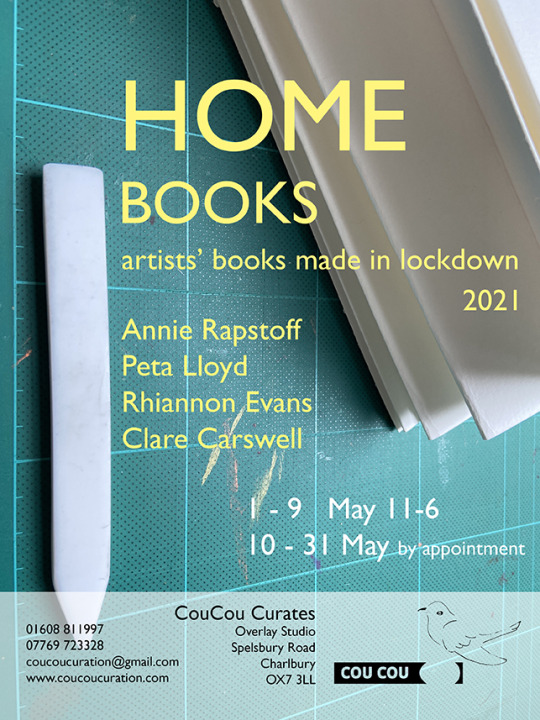
HOME BOOKS CATALOGUE ESSAY BY HOPE COLLINSON
Bringing five artists together to show books made through solitary artistic practice at home during the Covid -19 lockdowns, the CouCou Home Books exhibition demonstrates the resourcefulness of the artists in utilising the confined domestic space for creative production. The imposed restrictions were unwelcome and meant that the artists shifted their focus into the safe home space around them. This led to a forced introspection of the familiar leading to inspiration and adaptation, as well as compromise.
Conversation with the artists, from the perspective of an art writer, reveals that preoccupation with ‘home’ became a common theme for all, as the constraints of the lockdowns affected almost every aspect of the creative process. Another important theme that emerged was the re-assessing and re-presenting of work from their professional archives in new ways.
Rhiannon Evans uses her books as a way to ‘translate’ previous works, linking to other projects she has participated in. She deconstructs the idea of the book, stripping it back to the bare form of the folio and through its presentation maintains the freedom to reorganise differing aspects of it, so bringing a transient structure to archived works.
Annie Rapstoff drew inspiration from the sounds of chairs and tables in her home, marking a transition from looking for inspiration from the outside to deep listening to the inner. Creating books offers her a way of manifesting her practice in tangible objects, as representations of her art finding new directions.
Clare Carswell felt a deeper involvement with her home environment, incorporating sunlight through windows and objects such as dinner plates, mops and bedding into her photographic works. She took the concept of the studio out into her garden and the surrounding nature to make performance works for camera that harnessed the elements of wind, water and ice. Her books act as a portal to online records of those unique and private performative events.
Peta Lloyd used objects from within her personal environment in the creation of her books, as she made use of scrap paper from her PhD, finished in the first lockdown, as a principal material. Although it is usual for her to repurpose inexpensive and everyday materials in her work, the pandemic has brought about a transition to working smaller, focusing on the repetitive action of folding, that takes time to complete. These actions do not need a large space or studio, just a dining room table for getting lost in the practice itself.
A number of the artists drew attention to the welcome distraction of the time-consuming nature of creating the books. Art making and crafting at home can be a casual activity which does not require formality or intense concentration. It can be dipped in and out of, and smaller everyday pleasures can find themselves becoming part of the creative process. The pandemic has changed the way we perceive our home space as it has become a multi-purpose environment. For artists, the same is applicable to a studio space through its hasty and temporary relocation. This can both consciously and subconsciously infringe on privacy, as what may be a quiet studio space during the day needs to become a dining space in the evening. Lockdown has introduced the idea of the studio as an ever-changing space, that is flexible according to the needs of the artist and perhaps their cohabitees. It is clearer than ever that there is no ‘right’ way to practice art at home.
Despite the pandemic driving us physically apart, technology is bringing us closer together, and the importance of communication with others as part of the creative process has become pertinent for these artists throughout the solitary period of the lockdowns. Undeniably, lack of social interaction and physical sharing of spaces is one of the most noticeable impacts of the pandemic not just on artistic practice, but daily life in general. The regular online conversations between the artists provided a sense of community for them, creating a trusted space within which to share, discuss, and feedback on work. Brought together by the online CREiA course, this group of artists found focus and structure through their mutually supportive connection that has enabled growth in their work during the hardest of times, some of which is evidenced in the Home Books exhibition. As we configure our lives to be more compatible with technology, the virtual ‘new normal’ has allowed us to network with others, opening up the world by enabling global communities to form. This seems to be a new world where we are able to look outside of our usual networks and communities and extend connections further afield. All artists speak of the importance of such connection and the benefits of working with other artists to facilitate their creative process and provide a structure to their working week.
Shared project working towards deadlines invariably facilitates the processes of creating and completing work. At a time where artists are working at varying levels of ‘observable’ productivity, sharing practice with like-minded artists has motivated them while working through the constraints and challenges that lockdown presents. The dynamic conversations between the artists, at a time of great anxiety and isolation, is enabling new ways of working for all. The creation of these diverse artists’ books asks what ‘the book’ might be and offers varied and individual propositions to us.
The isolating experience of lockdown has been personal to each individual, and its impact on artists has affected the creative process through the relocation of studio space to the domestic realm, increased reliance on new technologies to sustain networks and changes to shared practice. In a pre-pandemic world, the practice of retreat, of sabbatical, and its benefits of solitude for research were embraced as a means of enabling focus and reflection. Part of the meaning that we have attached to lockdown lies in the linguistic signifier, and it is worth considering how our perceptions of this time would be changed if ‘lockdown’ was ‘respite’.
Hope Collinson www.hopecollinson.com
0 notes